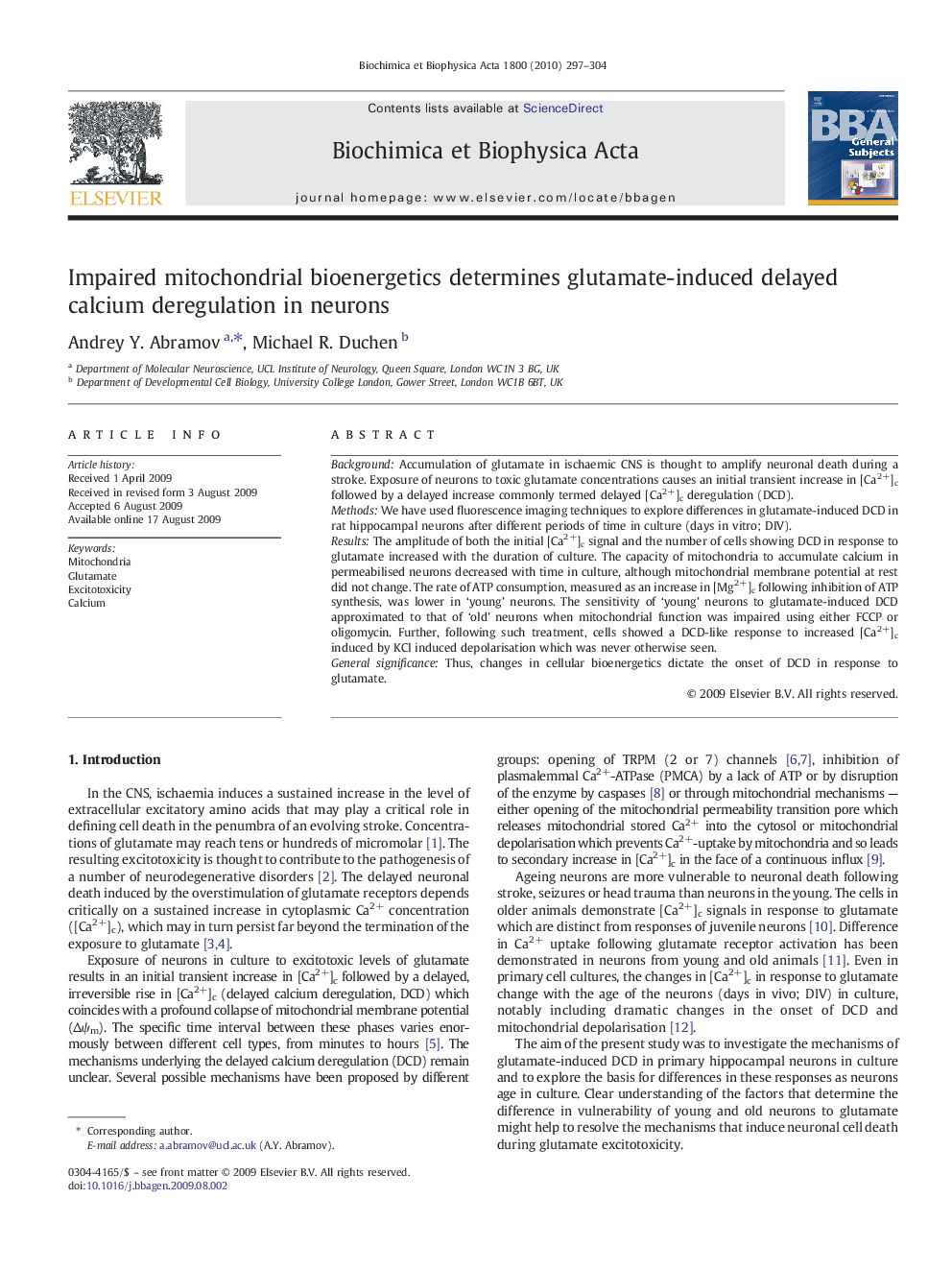| Article ID | Journal | Published Year | Pages | File Type |
|---|---|---|---|---|
| 1948129 | Biochimica et Biophysica Acta (BBA) - General Subjects | 2010 | 8 Pages |
BackgroundAccumulation of glutamate in ischaemic CNS is thought to amplify neuronal death during a stroke. Exposure of neurons to toxic glutamate concentrations causes an initial transient increase in [Ca2+]c followed by a delayed increase commonly termed delayed [Ca2+]c deregulation (DCD).MethodsWe have used fluorescence imaging techniques to explore differences in glutamate-induced DCD in rat hippocampal neurons after different periods of time in culture (days in vitro; DIV).ResultsThe amplitude of both the initial [Ca2+]c signal and the number of cells showing DCD in response to glutamate increased with the duration of culture. The capacity of mitochondria to accumulate calcium in permeabilised neurons decreased with time in culture, although mitochondrial membrane potential at rest did not change. The rate of ATP consumption, measured as an increase in [Mg2+]c following inhibition of ATP synthesis, was lower in ‘young’ neurons. The sensitivity of ‘young’ neurons to glutamate-induced DCD approximated to that of ‘old’ neurons when mitochondrial function was impaired using either FCCP or oligomycin. Further, following such treatment, cells showed a DCD-like response to increased [Ca2+]c induced by KCl induced depolarisation which was never otherwise seen.General significanceThus, changes in cellular bioenergetics dictate the onset of DCD in response to glutamate.
